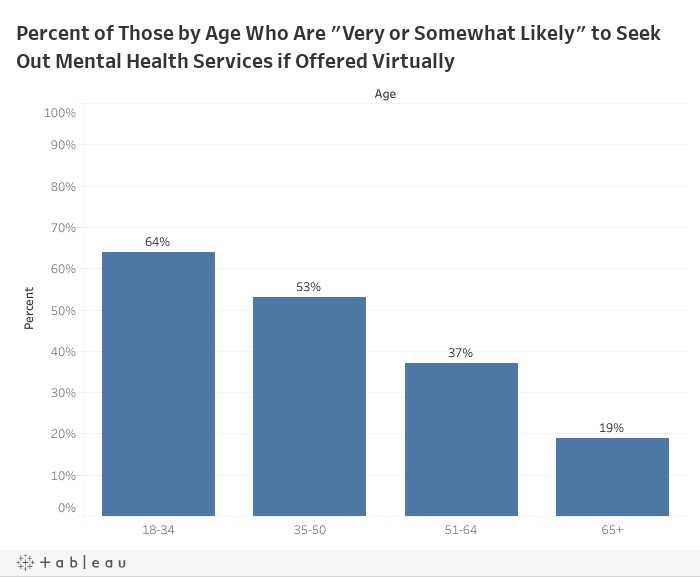
Virtual mental health increasingly important for younger and Hispanic populations, data shows – MedCity News

The Covid-19 pandemic created a massive shift to virtual health and the need for convenient and affordable care, with 62% of consumers saying they are either very or somewhat likely to use a virtual visit if they don’t need a physician examination, according to a new CVS Health’s 2022 Health Care Insights Study.
The survey featured 2,600 consumers in total. This included 1,000 participants 18 years and older throughout the U.S. In addition, it surveyed 200 consumers in six regional areas each: Atlanta, Houston, Chicago, Columbus, Philadelphia and Phoenix. It also featured 200 Black consumers and 200 Hispanic consumers. Lastly, it surveyed 400 healthcare providers.
While 92% of consumers said virtual care adds convenience when choosing a primary care provider, those accessing virtual mental healthcare had different responses to how convenient/private it was based on age and race, additional CVS data obtained by MedCity News showed.
Difference in race
Among all races, a majority viewed virtual visits for mental health as more convenient. This represents 73% of Hispanic respondents, 68% of Black respondents, 73% of White respondents and 69% of respondents of other races. Respondents self-identified their race and many selected multiple options.
But when it comes to the privacy of virtual mental health visits, 70% Hispanic respondents found virtual visits more private than in-person, highlighting the mental health stigma that exists in the Hispanic population, according to the survey. This compares to 63% of Black respondents, 57% of White respondents and 61% of respondents of other races.
“Virtual mental health services allow patients to confidentially access care from their home without having to sit in a waiting room or ask family or friends for assistance in traveling to a visit,” said Creagh Milford, vice president and clinical lead for enterprise virtual care of CVS Health. “Telehealth allows the patient to control where and when to access services.”
The survey found the same when it came to confidentiality: 67% of Hispanic respondents found virtual mental health visits more confidential than in-person, compared to 64% of Black respondents, 58% of White respondents and 59% of respondents of other races. Additionally, 61% of Hispanic respondents said virtual visits would make them more likely to seek mental health services, and 66% said virtual mental health visits would help avoid stigmas, higher than other respondents.
“While we’ve made strides to normalize mental health conversations, stigma still remains, especially among historically underrepresented groups,” Milford said. “Virtual care offers more accessibility, yes, but it can also be a welcome option for those who are apprehensive about receiving mental health care in person.”

Difference in age
The use of virtual visits, such as Zoom, for care with a doctor or provider dramatically differs by age: 55% of those aged 18 through 34 use virtual visits, compared to 40% of those aged 35 to 50, 30% of those aged 51 to 64 and 17% of those aged 65 and above.
When it comes to seeking mental health virtually, there was a similar variation in responses by age: 64% percent of those aged 18 to 34 are very or somewhat likely to access mental health care virtually, compared to 53% those aged 35 to 50, 37% of those aged 51 to 64 and 19% of those aged 65 and older.
“In general, virtual visits provide a number of patient benefits, requiring less of a time commitment and providing more convenience and accessibility as well as affordability,” Milford said. “We especially see enthusiasm for virtual visits among younger patients, who are very comfortable communicating virtually.”
Younger age groups are also more concerned about physical health (52%), their mental health (58%), the mental health of family and loved ones (50%), and safety and neighborhood security (43%), CVS found. For those aged 65 and above, these numbers are 31%, 14%, 16% and 13% respectively.
“Young individuals have felt and continue to feel increased stress and anxiety since the onset of the pandemic. External stressors like school, work, climate change and more, combined with the hyper-connection that characterizes younger generations, can evoke feelings of hopelessness, anxiety and isolation in some youth,” said Cara McNulty, president of behavioral health and mental wellbeing at CVS Health.
How providers are shifting
To accommodate the rise in virtual care, providers are making changes to their services, the data showed: 54% percent of providers have added virtual office visit capabilities, 42% added an online portal, 43% have added mobile capabilities and only 9% said they don’t offer virtual care. The question presented to respondents did not specify a time frame.
The most popular digital tools providers are adopting are electronic medical records and patient portals. A whopping 71% of providers say they use the electronic medical records and 67% said they offer patient portals for consumers.
The shift to offering virtual care and digital tools is having an impact on patient volumes, with 53% of providers saying that adding virtual services increased patient visits. Of these providers, 93% said virtual visits made it more likely patients would make appointments. The data did not specify between whether this led to a rise in virtual appointments or in-person appointments.
“[The data] revealed that individuals have a more holistic perspective on what health care should look like,” Milford said. “Online tools like electronic health records and patient portals make communication among various providers easier, which helps patients and their care team align on health goals and how to achieve them.”
Photo: CVS Health
